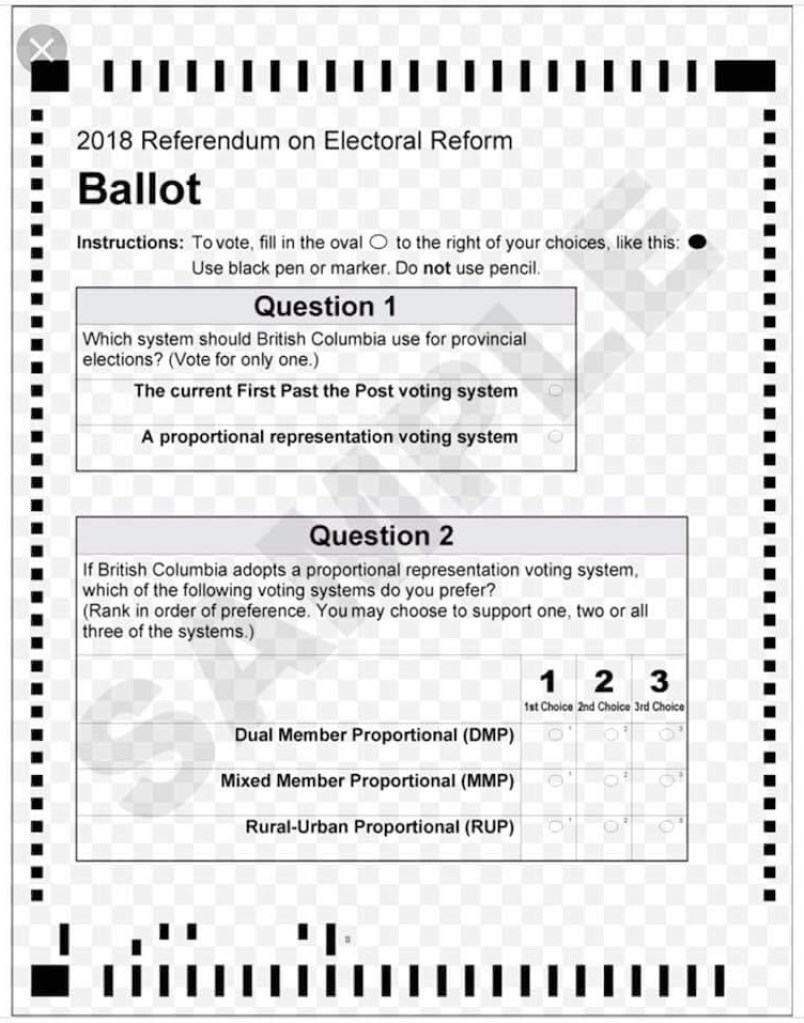With only 11 days left for B.C. residents to return their votes for the electoral reform referendum, Richmond News interviewed Nick Loenen, a former Richmond councillor and MLA, and co-founder of a proportional representation (PR) advocacy group Fair Voting BC. We asked him what Richmond would look like under a PR electoral system.
Loenen said if the electoral system was switched to PR, instead of having all four MLAs from the BC Liberal Party, even though the majority of Richmondites did not vote Liberal, Richmond might have two Liberals and, perhaps, one MLA from the NDP and one from the Green Party.
“If you look at the last (provincial) election, we have four Richmond MLAs and all four are Liberal. But in fact, 52 per cent didn’t vote Liberal,” said Loenen.
Depending on which option of PR is chosen, it is possible Richmond will keep the four MLAs it has now but share some MLAs with a neighbouring region, and they might come from different parties, he added.
“The purpose of PR system is to make the makeup of the legislature be exactly the way the people voted.”

Mixed Member Proportional
Of the three PR options proposed on the referendum ballot, Mixed Member Proportional (MMP) is the most well-known. It’s used in Germany, New Zealand and parts of the UK, while variations of it are used in most Scandinavian countries.
“How (MMP) would work is, you will have two votes. The first vote is for a strictly local candidate. That one will be probably exactly the way we do today – you get to choose one candidate only,” said Loenen.
The candidate who gets the most votes wins the seat, as is the case now. Although the riding would probably be larger. Instead of four, Richmond may have two ridings, for example. However, voters then get a second vote for a regional MLA. The region could be the size of Richmond or the size of Metro Vancouver; that will probably be determined by the electoral boundary commission, said Loenen.
The regional MLAs will be allocated to reflect that region’s popular vote.
The MMP system allows voters who don’t get their parties elected in Richmond to still have a regional MLA to represent them in Victoria, said Loenen.
Rural Urban Proportional
Loenen explained that the Rural Urban Proportional option would be a combination of Mixed Member Proportional in the rural areas and Single Transferable Vote (STV) in urban areas.
The STV system allows for a “preferential vote,” where voters rank the candidates.
"If their first choice is not elected, their second choice will be counted in a certain proportion, so their vote is not wasted,” he said.
In this system, Richmond will still have four seats. But unlike the current system in which there are four separate ridings each with one MLA, there would be one riding with four MLAs.
“It will use preferential ballot so the chance to elect four MLAs from the same party in Richmond is almost zero,” he said.
Dual Member Proportional
As for the Dual Member Proportional (DMP), the four existing ridings will be combined into two, according to Loenen, and Richmond would elect two MLAs from each riding, in the way we do today, and two more MLAs will come from a larger region – a region made of Richmond and neighbouring ridings.”
"For example, it could be that Richmond is entitled to one green party MLA, but there are not enough votes in Richmond to make a Green Party a member,” said Loenen.
"So they take some of the votes for the Green Party from a neighbouring riding in Burnaby, Delta or South Vancouver – those votes get put together to have enough vote to elect one Green member in that area.”



